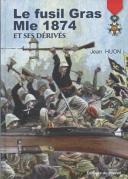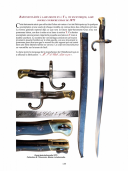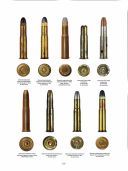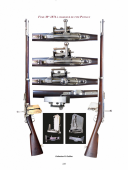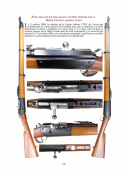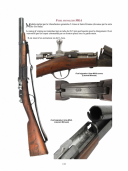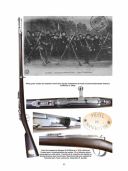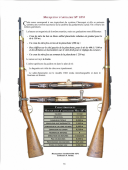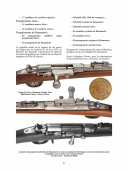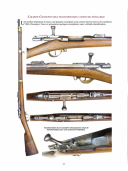
Jean Huon - The Gras Rifle Model 1874 and Its Variants.
Sold out
JEAN HUON - THE GRAS RIFLE MODEL 1874 AND ITS DERIVATIVES.
After six months of fierce fighting, the French armies had to lay down their arms in 1871 against the German Confederation. It wasn't for lack of courage on the part of French soldiers, who fought fiercely, but the organization of the troops was lacking while some military or political leaders failed in their duty. Germany, united within a new empire, quickly showed its intentions to remain master of Western Europe. As early as 1871, Germany adopted a new rifle firing a metallic cartridge. France, motivated by a spirit of revenge, reacted promptly and modernized the Chassepot rifle, whose ballistic value was indisputable. Thus, the Gras rifle was developed and adopted in 1874; it was quickly manufactured in large quantities. It could be either newly constructed or the result of upgrading the Mle 1866 rifle. We invite you to discover the trials and development of the new rifle, as well as all the attempts made to modernize it with dozens of repeating rifle prototypes leading to the adoption of the 1878, 1884, and 1885 rifles also described in this book. Most of these have never been presented to this day, making this publication the most comprehensive on the subject. We have included a description of bayonets (including trial models), accessories, maintenance tools, and ammunition. All these elements make the Gras rifle a fascinating collecting theme today. However, facing the modernization of new weapons, especially with the caliber reduction and smokeless powder, it had to make way for the Lebel rifle. The history of the Gras rifle is intimately linked to France's colonial campaigns at the end of the 19th century, whether in Tonkin, Madagascar, or Africa. Although technologically outdated, it returned to service in 1914 and was still used in 1939-40. Shooting enthusiasts have not been forgotten and will also find plenty to satisfy their curiosity within these pages. Through its 336 pages, with over 1,000 color photos and plans illustrating this book, it becomes an exceptional document for all collectors and history enthusiasts.
Size: 21x29.7cm
336 pages
Éditions du Brévail
After six months of fierce fighting, the French armies had to lay down their arms in 1871 against the German Confederation. It wasn't for lack of courage on the part of French soldiers, who fought fiercely, but the organization of the troops was lacking while some military or political leaders failed in their duty. Germany, united within a new empire, quickly showed its intentions to remain master of Western Europe. As early as 1871, Germany adopted a new rifle firing a metallic cartridge. France, motivated by a spirit of revenge, reacted promptly and modernized the Chassepot rifle, whose ballistic value was indisputable. Thus, the Gras rifle was developed and adopted in 1874; it was quickly manufactured in large quantities. It could be either newly constructed or the result of upgrading the Mle 1866 rifle. We invite you to discover the trials and development of the new rifle, as well as all the attempts made to modernize it with dozens of repeating rifle prototypes leading to the adoption of the 1878, 1884, and 1885 rifles also described in this book. Most of these have never been presented to this day, making this publication the most comprehensive on the subject. We have included a description of bayonets (including trial models), accessories, maintenance tools, and ammunition. All these elements make the Gras rifle a fascinating collecting theme today. However, facing the modernization of new weapons, especially with the caliber reduction and smokeless powder, it had to make way for the Lebel rifle. The history of the Gras rifle is intimately linked to France's colonial campaigns at the end of the 19th century, whether in Tonkin, Madagascar, or Africa. Although technologically outdated, it returned to service in 1914 and was still used in 1939-40. Shooting enthusiasts have not been forgotten and will also find plenty to satisfy their curiosity within these pages. Through its 336 pages, with over 1,000 color photos and plans illustrating this book, it becomes an exceptional document for all collectors and history enthusiasts.
Size: 21x29.7cm
336 pages
Éditions du Brévail
Reference :
978-2-491741-07-5
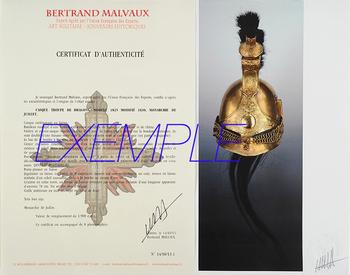
Next update Friday, december 26 at 13:30 PM
FOR ALL PURCHASES, PAYMENT IN MULTIPLE CHECKS POSSIBLE
bertrand.malvaux@wanadoo.fr 06 07 75 74 63
SHIPPING COSTS
Shipping costs are calculated only once per order for one or more items, all shipments are sent via registered mail, as this is the only way to have proof of dispatch and receipt.
For parcels whose value cannot be insured by the Post, shipments are entrusted to DHL or Fedex with real value insured, the service is of high quality but the cost is higher.
RETURN POLICY
Items can be returned within 8 days of receipt. They must be returned by registered mail at the sender's expense, in their original packaging, and in their original condition.
AUTHENTICITY
The selection of items offered on this site allows me to guarantee the authenticity of each piece described here, all items offered are guaranteed to be period and authentic, unless otherwise noted or restricted in the description.
An authenticity certificate of the item including the description published on the site, the period, the sale price, accompanied by one or more color photographs is automatically provided for any item priced over 130 euros. Below this price, each certificate is charged 5 euros.
Only items sold by me are subject to an authenticity certificate, I do not provide any expert reports for items sold by third parties (colleagues or collectors).
FOR ALL PURCHASES, PAYMENT IN MULTIPLE CHECKS POSSIBLE
bertrand.malvaux@wanadoo.fr 06 07 75 74 63
An authenticity certificate of the item including the description published on the site, the period, the sale price, accompanied by one or more color photographs is automatically provided for any item priced over 130 euros. Below this price, each certificate is charged 5 euros.
Only items sold by me are subject to an authenticity certificate, I do not provide any expert reports for items sold by third parties (colleagues or collectors).
